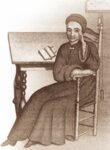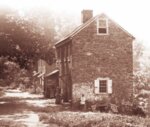Then, businessmen turned its banks into a center of industry, and were followed by artists who found inspiration in its sloping terrain.
This item is available in full to subscribers.
We have recently launched a new and improved website. To continue reading, you will need to either log into your subscriber account, or purchase a new subscription.
If you are a digital subscriber with an active subscription, then you already have an account here. Just reset your password if you've not yet logged in to your account on this new site.
If you are a current print subscriber, you can set up a free website account by clicking here.
Otherwise, click here to view your options for subscribing.
Please log in to continue |




... Then, businessmen turned its banks into a center of industry, and were followed by artists who found inspiration in its sloping terrain.
In every incarnation of this 1,800-acre park, revered by those who seek its serenity, it has been shaped by the people who have lived and worked on the land. And that history is a guiding principle of The Friends of the Wissahickon, the non-profit caretaking organization now celebrating 100 years of protecting and improving the park.
The stories of these people are part of the social and cultural topography of the Wissahickon that, along with economic and ecological forces, have helped to propel the park’s narrative, said David Contosta, a professor at Chestnut Hill College and co-author with Carol Franklin, of “Metropolitan Paradise: The Struggle for Nature in the City,” a history of the Wissahickon Valley.
Contosta, and Franklin, a landscape architect and expert in ecological design, spent more than 10 years researching the stories of the Wissahickon - how they lived, and how they viewed the valley. Was the Wissahickon a valuable resource to be mined for wealth? Or was it a character in a more mystical story, in which nothing, animal or otherwise, is superior to the other? Or maybe, it was a natural jewel that needed to be snatched away from the threat of further harm.
Indigenous and immigrant
For the Lenni-Lenape, the first documented residents of the Wissahickon, everything had a spirit, Contosta said. “They saw themselves as part of nature and not standing over it and dominating it.”
Speaking a dialect of the Algonquin language, the Native American community lived in villages along what is now Germantown, Bethlehem, and Ridge Pikes. They were horticulturalists who cleared the land for their villages and crops by burning down trees. They grew corn, beans and squash to eat and hunted and fished in the creek.
Catfish creek
They also gave the park its name. issahickon is believed to be an adaptation of a Lenni-Lenape word wisameckham, meaning catfish creek. According to one account from 1817, the fish were once so plentiful that “one scoop of the dip-net has brought up more catfish than could be lifted into the boat by one man.”
They were good neighbors to the early settlers who showed upon their shores. The indigenous people “cultivate among themselves the most scrupulous honest, are unwavering in their promises,” wrote Francis D. Pastorius, founder of Germantown.
Some of these recent immigrants, like Pastorius, were pius Protestants who saw the forest of the Wissahickon “as a haven from the corrupt and wicked world,” Contosta writes. One such group eventually conducted baptisms in the creek above Kitchens Lane in Mt. Airy. Another, led by German mystic Johannes Kelpius, settled along the Wissahickon on land given to them by Philadelphia merchant Robert Whitpain. They lived there, secluded and in meditation, waiting for the second coming of Christ.
When their predicted second coming failed to arrive, the followers broke away and moved to Germantown, leaving Kelpius to live beneath rocks on a Roxborough hillside, known as Hermit’s Cave.
Industry and artists
But among these newcomers were a group who saw the Wissahickon as something other than a peaceful refuge. They saw the power of the creek’s water, and sought to harness it for energy to fuel their industries.
That meant grinding crops like wheat and corn, making paper, sawing wood, and weaving cloth. Eventually, some 50 industrial mills were built along the Wissahickon or its tributaries. They provided jobs and fueled a local economy; they also polluted the watershed, and employees worked amid dirt, ear-splitting noise and dangerous equipment.
The first paper mill, founded by William Rittenhouse near Lincoln Drive and Wissahickon Avenue, evolved into a busy industrial village called Rittenhouse Town. Some traces of the houses, church, school and firehouse that once stood there remain today.
But the milling business was fraught with competition, and challenged by changing technology. The water-powered mills that once thrived along the Wissahickon would eventually be replaced by those in Manayunk and other parts of the city, which were powered by steam.
While most of the buildings of that industrial era are now long gone, some of their remnants remain, evoking a feeling “that you are in touch with another time,” said historian Alex Bartlett, archivist for the Chestnut Hill Conservancy. “That is part of the charm of the Wissahickon.”
Despite the ecological damage done by the mills, the valley lured increasing numbers of visitors for recreation. Among them were writers and artists who were inspired by its natural beauty. Edgar Allen Poe, who visited a friend at East Falls would later write a poem about the valley, and artists such as painter Thomas Moran immortalized the landscape.
Protecting the valley
The romantic views of nature embodied by the creatives operated alongside a growing concern for the city’s water supply, which was being polluted by industry along the Schuylkill River and its tributaries, including the Wissahickon. Prominent families began lobbying city officials to acquire the land and create a park that would protect the watersheds.
The Fairmount Park Commission was established in 1867 to acquire land along the Schuylkill and preserve it. A year later, the Wissahickon Valley was annexed to become part of Fairmount Park.
Saying no to cars
Then, shortly after the turn of the century, civic groups in Northwest Philadelphia spearheaded their own advocacy to lobby against cars in Wissahickon Park. They also worked to save the Valley Green Inn, and clear trees that had died from the chestnut blight. The work of the Friends of the Wissahickon (FOW) was among the most prominent of those efforts, Contosta said.
Founded in 1924, the organization began its mission after a group of concerned citizens joined forces to restore the park after a devastating storm. Now celebrating its 100th anniversary this year, FOW has become a powerful coalition of volunteers and neighbors who partner with businesses and civic groups, along with governmental entities, to protect and preserve the park.
FOW projects have included repairing infrastructure and trails, managing deer, and marshaling volunteers to pull invasive plants, plant flowers, dig swales, chop weeds and serve as trail ambassadors who assist visitors.
Along the way, prominent Northwest Philadelphia families, including the Houstons and Woodwards, made their own contributions, donating land to expand the park. And students at Chestnut Hill College are a part of the legions of volunteers who help preserve the park.
“If the Friends of the Wissahickon didn’t exist, this forest would be in a way worse condition,” said Hilton Oyamaguchi, an assistant professor of biology at Chestnut Hill College, who is studying the Wissahickon and leads groups of students in their work on the park. “We need to expose them to the outside. If we don’t, who will be the next generation to care about this forest?”